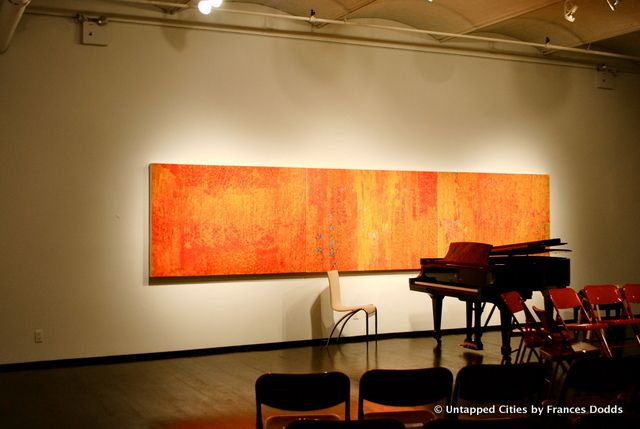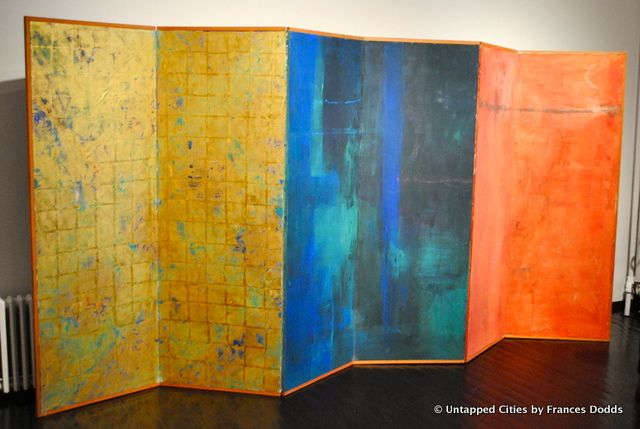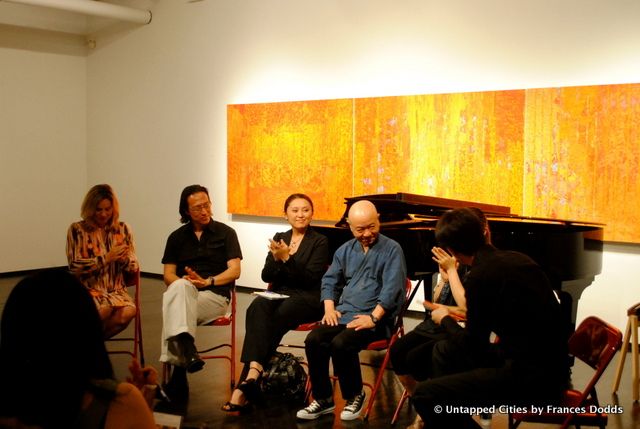Last-Minute NYC Holiday Gift Guide 🎁
We’ve created a holiday gift guide with presents for the intrepid New Yorker that should arrive just in time—


The Dillon Gallery is a place that accommodates silence well. The striking feature of the space, an arched white brick doorway, gives the room a slightly whimsical feel, negating sensations of starched sterility that can often inhabit gallery spaces. It encourages reverie, which the pieces exhibited there certainly warrant. And, on Saturday, the Dillon Gallery accommodated a conversation on silence, which struck me as deserving equal reverie.

The Chelsea Music Festival hosted a talk before Saturday evening’s performances called “The Great Wave, Silence and Song: Capturing the Forces of Nature.” The conversation included Makoto Fujimura, CMF’s Visual Artist in Residence, Somei Satoh, the festival’s Composer in Residence, Ken-David Masur, CMF’s Artistic Director, Dillon Gallery Founder Valerie Dillon, and Yumi Kurosawa, composer and virtuoso of the koto, the national instrument of Japan.
There was discussion of Makoto Fujimura’s work, two pieces of which were on display in the gallery–vibrant abstract paintings of mineral pigment and the translucent gold leaf that has become his trademark. Divine grace is arguably the central thematic current that pulls much of Fujimura’s work, and the spiritual ambience at play on the canvas is, in person, unmistakable and breathtaking. But there was more than just the artwork on display that lent Saturday evening’s talk an aura of the metaphysical.

Somei Satoh, one of Japan’s most internationally acclaimed composers, had some words to say regarding the source from which he draws inspiration for his compositions. A compact man with a smooth head, undeterminable in age, Satoh was dressed in a traditional Japanese Hippari wrap-around coat, black pants, and black Converse sneakers. His facial expressions were quick and committed, transitioning between austere and playful; the lines of a brow furrowed in concentration were wiped like a whiteboard in a nanosecond by a smile.
Somei Satoh believes that music is a form of communication between this world and “the other.” He clarified that by this he did not mean heaven or the afterlife, but simply, another dimension. He said that as he composes, he is always listening for notes from the other world, so to speak. He expounded, saying that in his opinion, the Western world often conceptualizes music as “a rebellion against silence.” This is parallel, he believes, to the Western world’s lens on “life versus death.” He suggests that silence is what comes before and after music, as the emptiness from which we came before birth is to what we return after death.
This touched a chord for me, the understanding that silence is an integral part of music, and that music is always aware of the silence by which it is enveloped, the way that we carry the awareness of death, perpetually, throughout the “scores” of our lives.
And as to the fear of silence, and death, Somei Satoh had words to say about that too. Namely: don’t be. He described a near death experience he had about two years ago. He had fallen terribly ill, and was in a coma of sorts, entirely non-responsive. But, he could hear the words being spoken around him, and he could hear the doctor telling his family that he was almost dead. Yet, he felt nothing in those hours but utter and “perfect peace.” I believe that Somei Satoh meant for us to understand that this transcendence, this gentle beckoning of the silence–this is the harmony he strives to achieve in his music. “And,” he said, shrugging and fixing his listeners with a grin, “it doesn’t always work out.” I think it works out often enough.
This Wednesday evening, at the Leo Baeck Institute, the Chelsea Music Festival will host the world premiere of Somei Satoh’s latest composition. The festival continues through this Saturday. Also, the Dillon Gallery with be hosting an exhibition of Makoto Fujimura’s work this coming November.

From left to right: Valerie Dillon, Makoto Fujimura, Mr. Satoh’s translator, Somei Satoh, Yumi Kurosawa, and Ken-David Masur
Subscribe to our newsletter